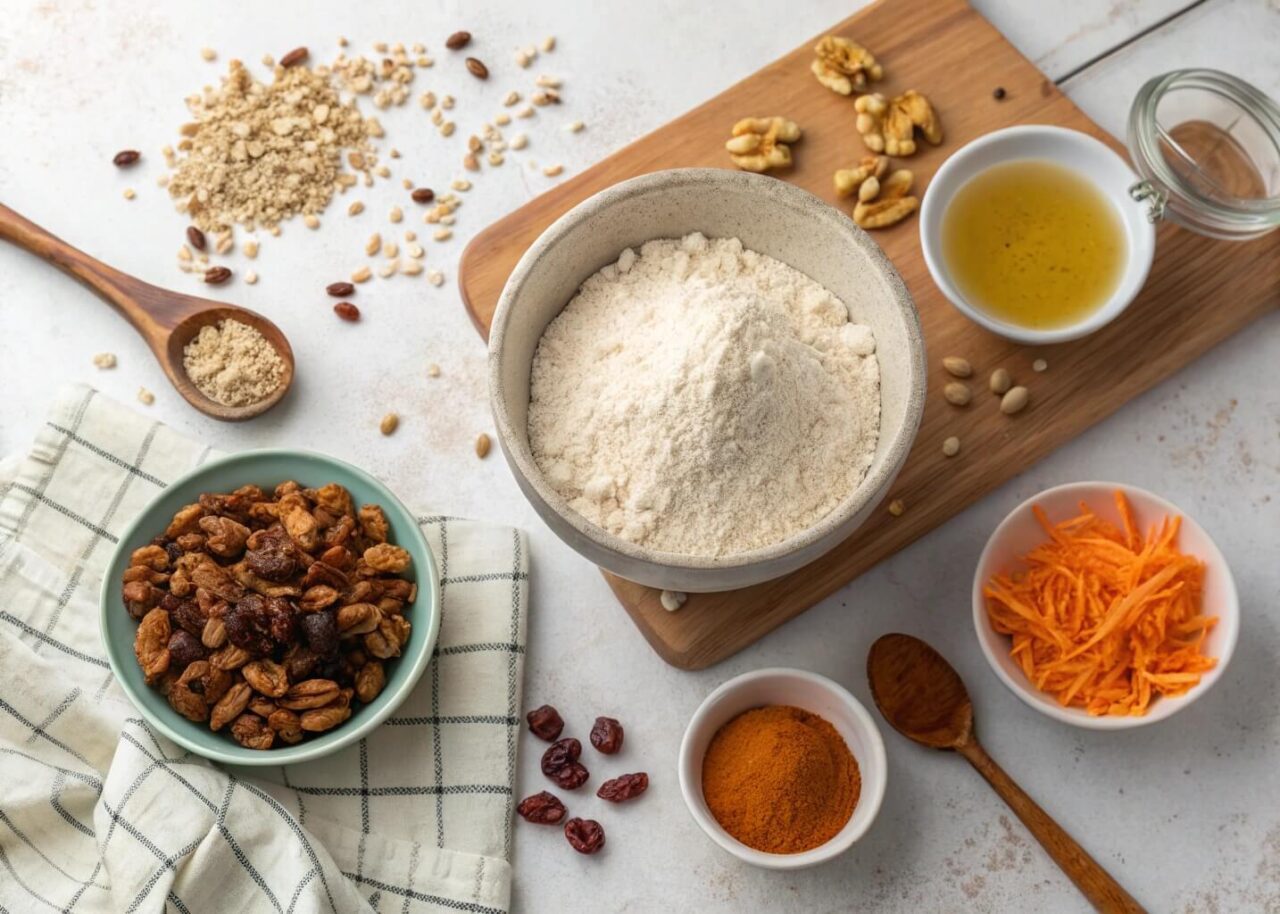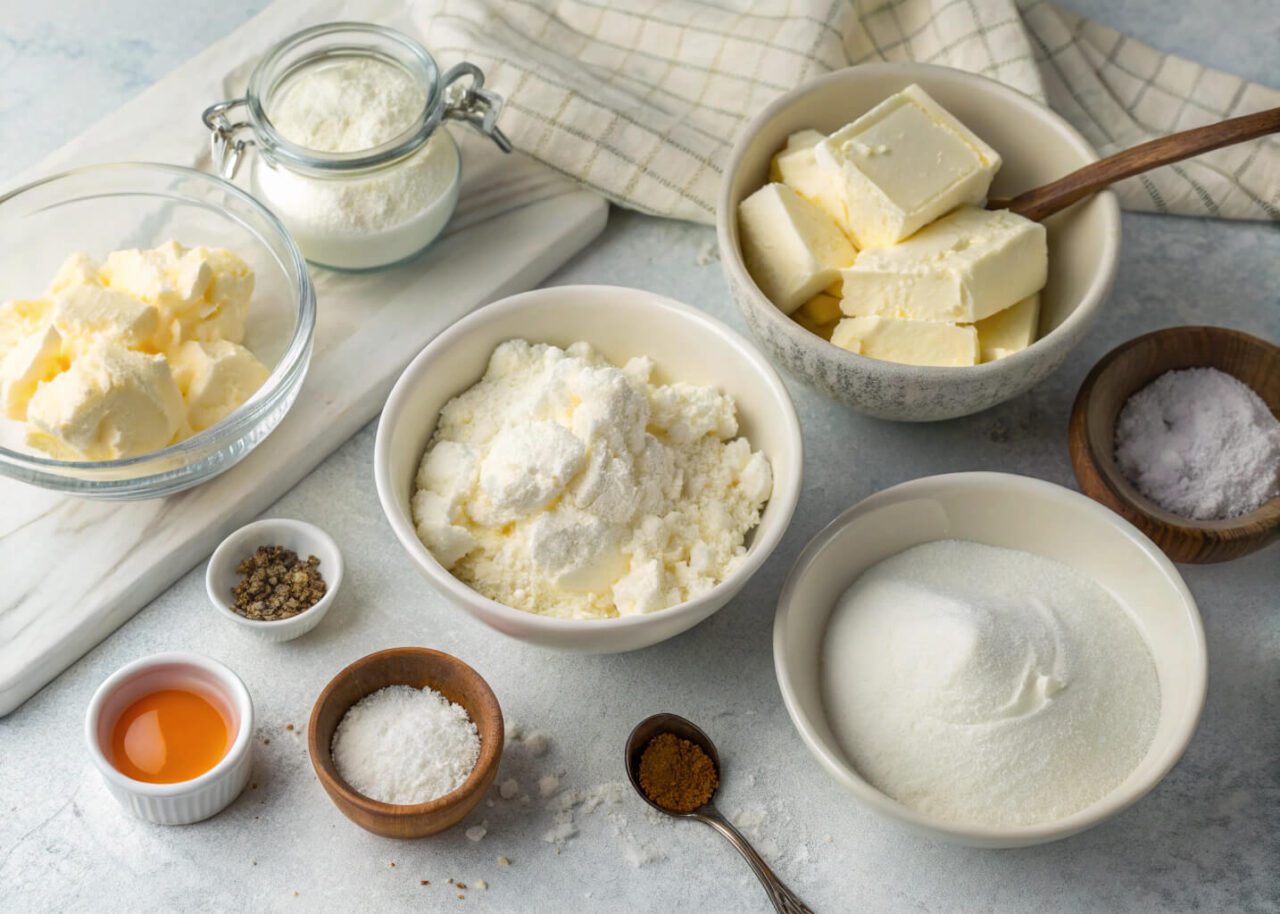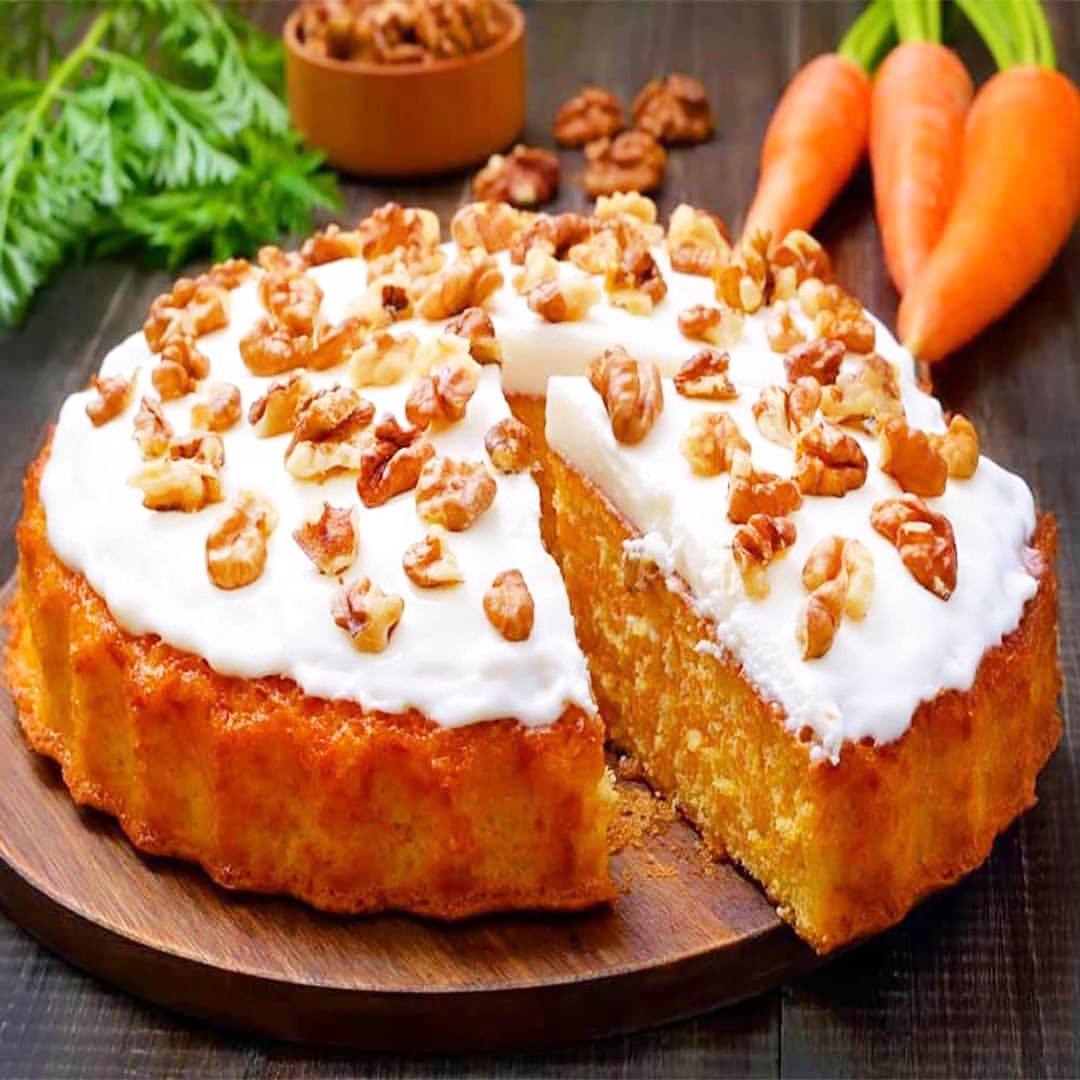Plant-based cuisine has achieved enormous appeal for excellent reasons. These dishes benefit the environment and offer several health benefits. Today, we’re offering two excellent dishes that showcase the diversity of vegetarian cooking: a nutritious vegan carrot cake and a savory vegetable pulao.
Our healthy carrot cake is entirely plant-based, utilizing flax eggs instead of traditional eggs and natural sweeteners, making it great for individuals with dietary restrictions. The veggie pulao recipe illustrates how few ingredients can make a satisfying and healthy main meal that’s excellent for family gatherings.
Let’s start by exploring these tasty dishes, showing that healthy eating doesn’t mean compromising taste.
Vegan Carrot Cake: A Healthy Sweet Treat
Carrot cake is a favorite treat worldwide, but conventional recipes often contain high levels of refined sugar and unhealthy fats. Our rendition transforms this classic into a nutritious powerhouse, preserving its flavor and moist texture.
This carrot cake features rice and oat flour, making it suitable for individuals with gluten intolerance. The natural sweetness of carrots and raisins reduces the need for extra sugar, while walnuts provide heart-healthy fats and protein. Flax eggs, which have binding qualities comparable to those of ordinary eggs, provide healthy omega-3 fatty acids.
Ingredients for the Cake

For the carrot cake:
- 70g rice flour
- 85g oat flour
- 100g cane sugar
- 1 teaspoon baking soda
- 1 tablespoon cinnamon
- 2 tablespoons flax seeds + 6 tablespoons water
- 150g grated carrots
- 1 tablespoon apple cider vinegar
- 180g coconut milk
- 40g chopped walnuts
- 50g raisins
- Extra raisins and walnuts for garnish
For the cream cheese frosting:
- 8 ounces cream cheese, softened
- ½ cup unsalted butter, softened
- 4 cups powdered sugar
- 1 teaspoon vanilla extract
- Pinch of salt

Preparing The Perfect Carrot Cake Batter
Making carrot cake batter requires meticulous attention to detail for optimal results. Start by preheating your oven to 350°F (175°C) and preparing two 9-inch round cake pans by greasing them and lining them with parchment paper.
The dry ingredients need proper mixing. Mix the flour, baking powder, baking soda, cinnamon, nutmeg, and salt in a medium bowl. This ensures even distribution of the leavening agents and spices throughout the cake. Many bakers skip this step, resulting in pockets of baking soda or overwhelming spice in certain bites.
In a separate large bowl, beat the eggs until they are slightly frothy, then add the sugar. Beat until the mixture becomes pale and slightly thickened.
This process, which takes approximately 3-4 minutes with an electric mixer, creates the structure that helps your cake rise properly. Slowly add the oil while continuing to beat the mixture until smooth.
The carrots require special attention. Use freshly grated carrots rather than pre-shredded ones from the store. Pre-shredded carrots are often dry and won’t release enough moisture into your cake.
A food processor with a grating attachment makes quick work of this task, but a box grater works just as well. After grating, lightly pat the carrots with a paper towel to remove excess moisture – too much will make your cake soggy.
Fold the dry ingredients into the egg mixture, careful not to overmix, which can lead to a tough cake. Then gently fold the grated carrots and, if using, the walnuts and raisins. The batter should be thick but pourable.
This carrot cake is a perfect afternoon treat with tea or a healthier dessert option after dinner. The best part is that you can enjoy it without the guilt of traditional desserts.
Advice on Baking for Ideal Texture
Many carrot cakes either succeed or fail throughout the baking phase. Split the batter evenly between your ready pans. To ensure equal baking, put the pans in the middle of the oven, ensuring they are not touching one another or the walls.
Bake for 30 to 35 minutes; 25 minutes marks the beginning of checking. A toothpick put into the center of the cakes will reveal if they are finished; it will come out clean or with some wet crumbs. Don’t overbake; even a few more minutes could cause your cake to become dry.
Temperature is critical. Many household ovens may be off by 25 degrees or more, so using an oven thermometer ensures your oven is at the temperature you set. If your oven has hot spots (most do), flip the pans halfway through baking for uniform browning.
Once cooked, let the cakes cool in their pans for precisely ten minutes. This period is critical – too short, and the cakes can shatter when removed; too long, and they might turn mushy from dampness. After 10 minutes, remove them from the wire racks to cool completely before icing.
For added moisture, some experienced bakers brush each layer with simple syrup (made by combining equal parts sugar and water, heating until the sugar dissolves, and then cooling) before frosting. This step isn’t required for this recipe but may prevent slightly overbaked layers.
Troubleshooting Common Issues
If your cake dips in the center, it’s typically due to underbaking or opening the oven door too early in the baking process. If it’s too thick, you could have overmixed the batter or used too much carrot. A cake that breaks on top frequently implies the oven temperature was too high.
Creating The Perfect Cream Cheese Frosting
The crowning beauty of every carrot cake is its cream cheese icing. Begin with room-temperature ingredients—cold cream cheese will result in lumpy frosting, while melted butter will not whip correctly.
Beat the softened cream cheese in a large basin until totally smooth, approximately 2 minutes. Add the softened butter and continue mixing until the mixture is light and fluffy, with no lumps remaining. This step is critical for perfect icing.
Gradually add the powdered sugar, approximately ½ cup at a time, beating thoroughly after each addition. This eliminates a powdery mess and guarantees seamless integration. After all sugar is added, mix in the vanilla essence and a sprinkle of salt.
The correct consistency should be spreadable yet firm enough to keep its form. If your frosting appears too soft, refrigerate it for 15-20 minutes before using. If it’s too stiff, add a teaspoon of milk or cream to loosen it.
Some bakers make the mistake of using reduced-fat cream cheese, which contains more water and results in a frosting that is too watery.
Always use full-fat cream cheese for the finest results. For a professional touch, conserve approximately ¾ cup of icing and dye it orange with food coloring. Use this to decorate little carrots on top of your frosted cake.
Health Considerations and Dietary Adaptations
Despite containing vegetables, traditional carrot cake is a decadent dessert. However, several adaptations can make it more suitable for various dietary needs without sacrificing flavor.
Gluten-Free Carrot Cake
Replace the all-purpose flour with a gluten-free all-purpose flour blend that contains xanthan gum. Bob’s Red Mill and King Arthur make reliable versions. The moisture from the carrots helps prevent the dryness that sometimes affects gluten-free baked goods.
Reducing Sugar and Fat
For a lighter version:
- Reduce the sugar by up to ¼ cup
- Replace half the oil with unsweetened applesauce
- Use light cream cheese in the frosting (though it will be slightly softer)
- Add extra spices to enhance flavor when reducing sugar
Vegan Carrot Cake
A vegan version requires several substitutions:
- Replace eggs with flax eggs (1 tablespoon ground flaxseed mixed with three tablespoons water per egg)
- Use vegetable oil (already plant-based)
- For the frosting, use vegan cream cheese and vegan butter substitutes
Whole Grain Options
For added nutrition:
- Replace up to half the all-purpose flour with whole wheat pastry flour
- Add two tablespoons of ground flaxseed to the batter
- Include ¼ cup of wheat germ for extra nutrients
This ultimate carrot cake recipe delivers excellence in every bite. The combination of spices accentuates the carrots’ natural sweetness without overpowering them. The texture achieves the proper middle ground—moist and soft yet with enough structure to support the thick cream cheese icing.
What sets this recipe apart is its stability. By following the principles outlined here—precise measuring, careful mixing, the correct baking temperature, and suitable chilling—you can consistently achieve bakery-quality results. The troubleshooting suggestions address frequent difficulties, assuring success even for new bakers.
This recipe’s adaptability also warrants notice. The fundamental recipe is an excellent starting point, while the proposed variants enable individual customization. This recipe adjusts well if you like a basic, traditional carrot cake or want to experiment with add-ins like pineapple, coconut, or other spice profiles.
Finally, the make-ahead and storage options make this cake suitable for regular baking and special occasions. Carrot cake frequently improves after a day in the refrigerator, so you may make it in advance, avoiding last-minute stress while entertaining.
Master this Ultimate Carrot Cake Recipe, and you’ll have a solid, crowd-pleasing dessert in your repertoire that’s worthy of being handed down through generations. The mix of healthful ingredients, toasty spices, and luscious icing produces a dessert that feels both soothing and exceptional—the hallmark of genuinely superb baking.
Can I make this carrot cake recipe as cupcakes?
Yes, this recipe translates beautifully to cupcakes. Line standard muffin pans with paper liners and fill each approximately two-thirds full. Bake at 350°F for 18-22 minutes, until a toothpick inserted in the middle comes out clean. This recipe yields approximately 24 cupcakes. Cool thoroughly before icing.
Why is my carrot cake so dense?
Carrot cake is inherently heavier than many cakes owing to the moisture content of the carrots. However, excessive density generally arises from overmixing the batter after adding the flour (which generates gluten) or using too many carrots. Mix just until ingredients are incorporated, then measure your carrots carefully.
Do I need to peel the carrots before shredding them?
Yes, carrots should be peeled before grating to remove the outer skin, which may be bitter. After peeling, use the medium holes on a box grater or a food processor with a grating attachment.
Can I make a carrot cake without nuts due to allergy concerns?
Absolutely. Nuts are optional in carrot cake. You may eliminate or substitute them with sunflower seeds (if you aren’t allergic) or more raisins for added texture.
How long in advance can I bake carrot cake?
The unfrosted cake layers can be prepared up to 3 days in advance and refrigerated, or up to 3 months in advance and frozen. A completely frosted cake may be refrigerated for up to 5 days. Many believe that carrot cake tastes even better on the second day, as the flavors have had time to develop.











